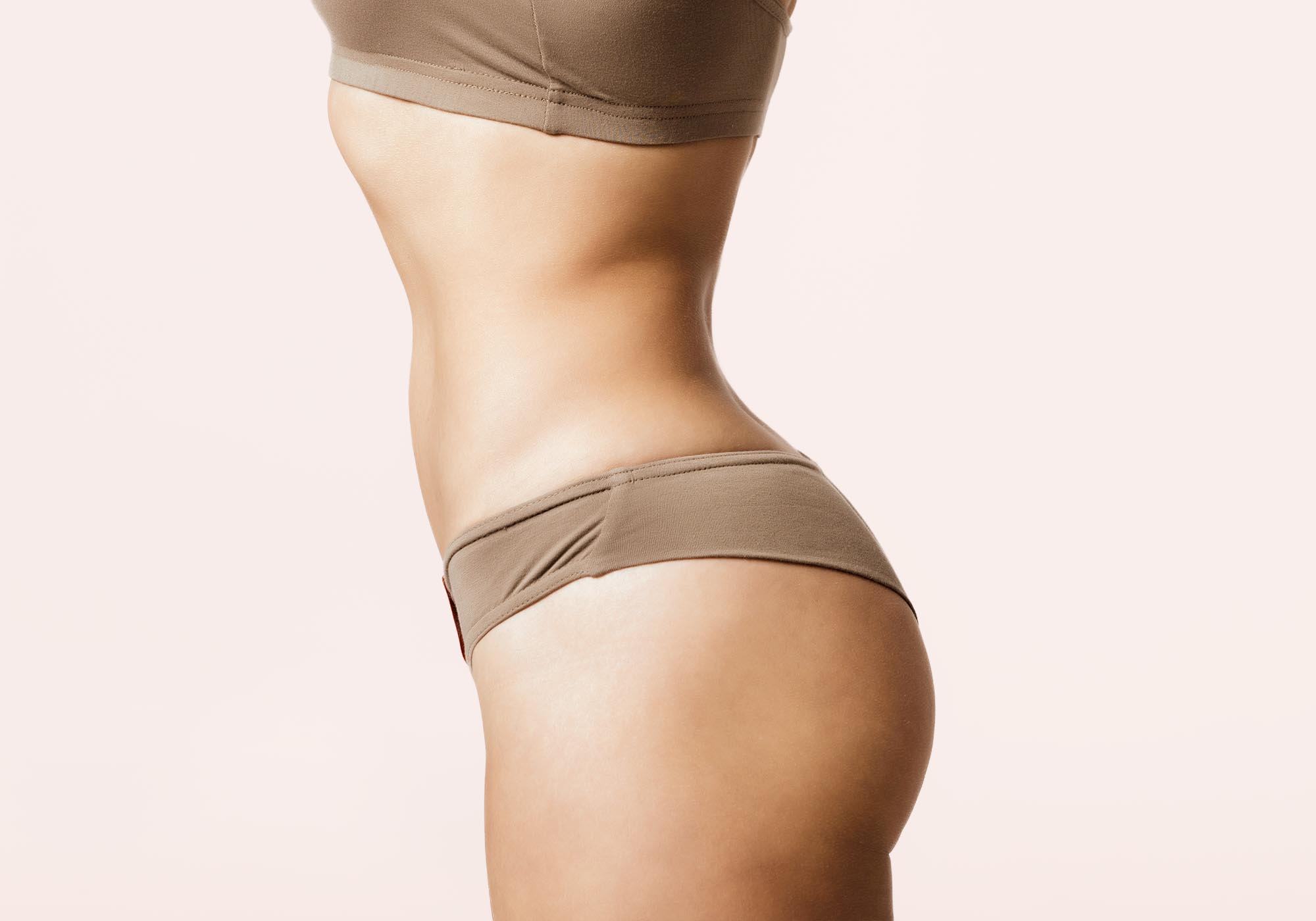For those desiring a bigger backside, there’s no body contouring procedure more popular than the Brazilian butt lift. The BBL, while not without risks, offers a way for patients to enhance their rear without the use of butt implants, a concept that’s extremely attractive to people, says New York City board-certified plastic surgeon Dr. Ryan Neinstein. “It’s fascinating, how much people like the idea of relying on their own fat and just moving it around, without having any type of foreign body involved,” he says. And according to him, the so-called skinny BBL procedure is even more appealing to a broader subset of patients—and is more popular than ever. Ahead, more on what the skinny BBL is, how it differs from its traditional counterpart, and who is a good candidate.
What is a skinny BBL?
The name comes from both the amount of fat used and from a broad generalization of the type of patient undergoing this plastic surgery procedure. “A skinny BBL is a fat transfer procedure in which we harvest fat by liposuctioning the abdomen and waist and injecting that fat into the buttocks,” explains Dr. Neinstein. But wait—that’s essentially what a traditional BBL is, right? Yes, the basic concept is the same, but there are some key differences.
How is it different from a regular BBL?
“A skinny BBL makes for a much more natural-looking end result,” explains Dr. Johnny Franco, a board-certified plastic surgeon in Austin, Texas. “The goal is enhancing and tweaking the shape of the buttocks rather than changing the size and creating a large butt.” Dr. Neinstein agrees: “It yields more of a sportier, perkier look rather than overly exaggerated, wide, heart-shaped buttocks.”
Ultimately, this boils down to how much fat is harvested and injected (and which areas of the body it is harvested from and injected into). Dr. Franco says he usually injects anywhere from 1,000cc to 1,300cc of fat per butt cheek during a regular BBL surgery, as compared to 600–1000cc per side in a skinny BBL. Dr. Neinstein offers this visual reference: “In a skinny BBL, the amount of fat I’m using per butt cheek is equivalent to a can of soda. In a traditional BBL, it’s a Big Gulp.”
Who is a good candidate for a skinny BBL?
“Typically, these are thinner, leaner patients who previously may have thought they weren’t candidates for fat transfer because the resorption rates were so high that it would render the procedure insignificant,” explains Dr. Neinstein. But new injection techniques have made it so that even small amounts of fat can make a big impact, he adds. Dr. Franco notes that patients with a BMI over 23 tend to be good candidates for traditional BBLs, whereas those with a BMI of 20 to 23 are better suited for skinny BBLs.
That being said, you don’t have to be rail-thin to want to enhance your buttocks ever so slightly, notes Dr. Neinstein. He says that a skinny BBL can be performed even on heavier patients and adds that it’s become an increasingly popular cosmetic surgery procedure among conservative and older patients looking for subtle contouring of the backside (BBLs can help fill out hip dips too). “The original BBL, and even the name itself, has a connotation of an exaggerated, caricature look. But now that we can do smaller amounts of targeted and finessed fat grafting, people are seeing [the skinny BBL] as a method of rejuvenation and a nice complement to other procedures, such as a mommy makeover,” he says. “It has expanded the patient population to include moms and grandmothers who don’t necessarily want to look like Jessica Rabbit but do feel like their butt is deflated and droopy and want it to appear lifted and perkier.”
How is a skinny BBL performed?
First, it’s important to discuss your exact goals with your doctor. “With a skinny BBL, you really need to think about your biggest priorities. Do you want a little more projection? Is the lateral butt what you want to be enhanced? With a traditional BBL, you don’t have to make those choices, but because there’s not a lot of fat to work with in this case, you have to be much more strategic,” Dr. Franco points out.
Traditional BBL liposuction usually occurs on the abdomen and waist, but additional areas of liposuction may be needed in a skinny BBL, particularly if the patient is on the leaner side. “When there’s no one area with a major deposit of fat, we have to liposuction more areas, taking smaller amounts of fat from each,” explains Dr. Neinstein, who says that he typically lipos not only the abdomen and waist but also the inner thighs and outer thighs. Dr. Franco agrees, saying that he also sometimes takes fat from the arms as well as liposculpts the bottom of the butt, the latter of which has the added benefit of making a big difference in terms of the overall shape. A skinny BBL typically requires much more targeted and precise fat injection.
What is the recovery period like?
The doctors we spoke with were split on this topic. Dr. Franco says the post-op recovery from a skinny BBL and a traditional BBL are equivalent. In fact, because more areas are liposuctioned in the case of the former, patients may experience even more soreness. (He also adds that because these tend to be thinner patients, there’s an increased risk of overliposuctioning and potential complications, such as deformities.) In the case of a BBL, it’s usually advised to keep any pressure off the buttocks for up to six weeks so as to not disrupt the transplanted fat. He notes that, because skinny BBL patients really want to hang on to every possible bit of fat they can, this timeline applies to them as well.
Dr. Neinstein disagrees: “Since we’re not putting in as much volume and challenging the capacity of the butt, there’s less swelling and a reduced risk of infection,” he says. “There’s also less downtime and restriction after the fact. We typically tell patients to stay off their butt for two weeks rather than the usual six, which is very appealing to them.”
In the case of both procedures, your doctor will likely recommend wearing compression garments and going for professional lymphatic massages.











